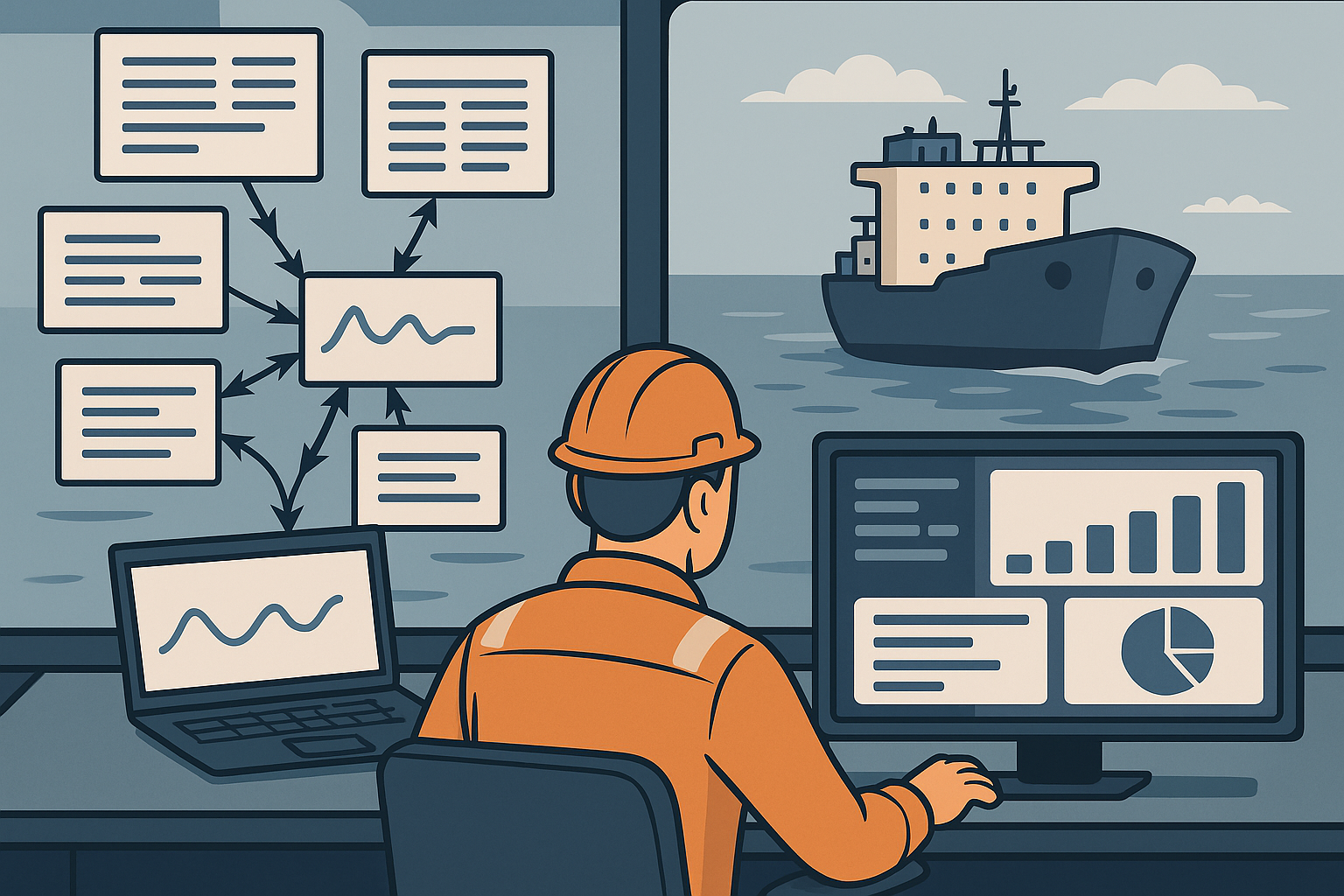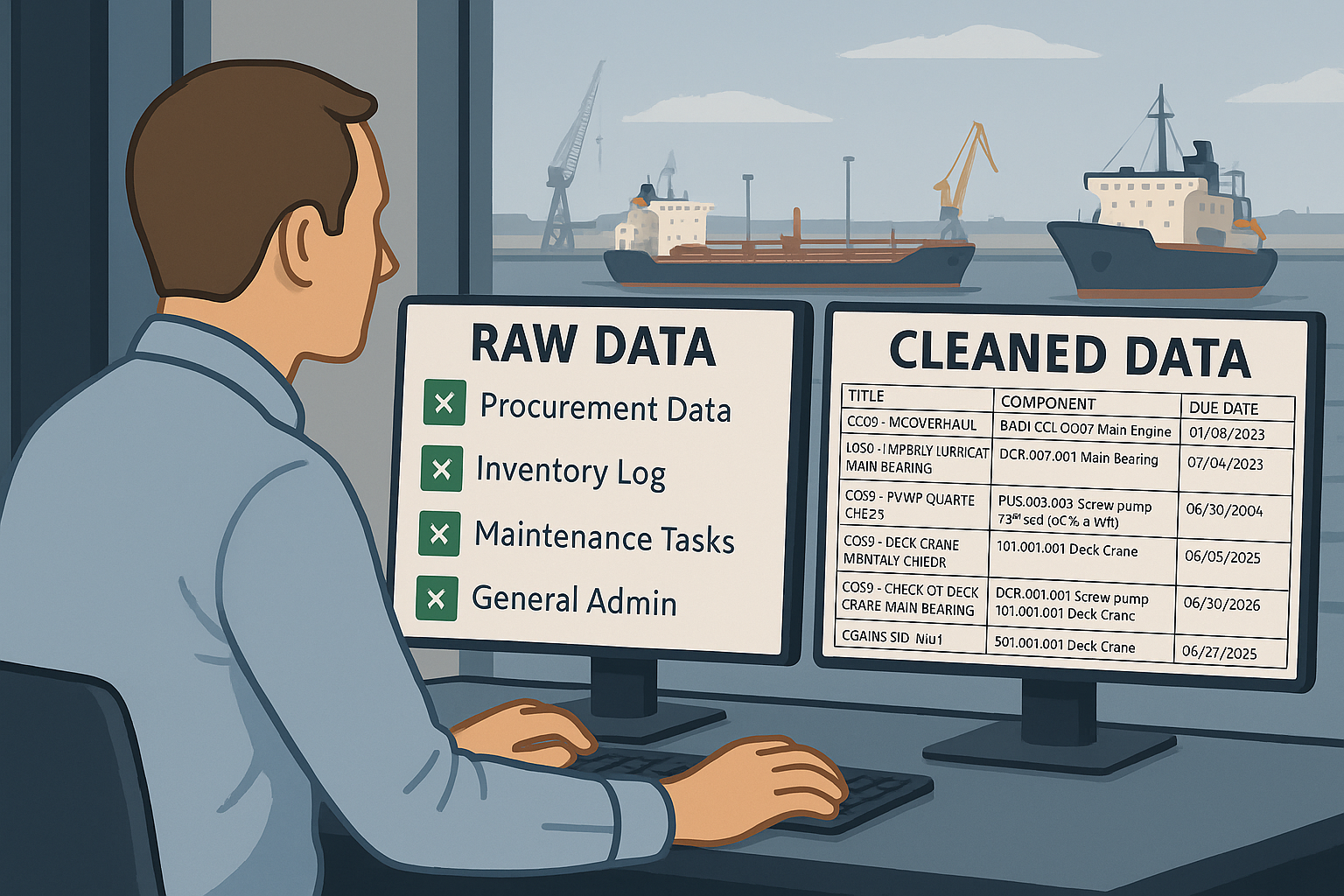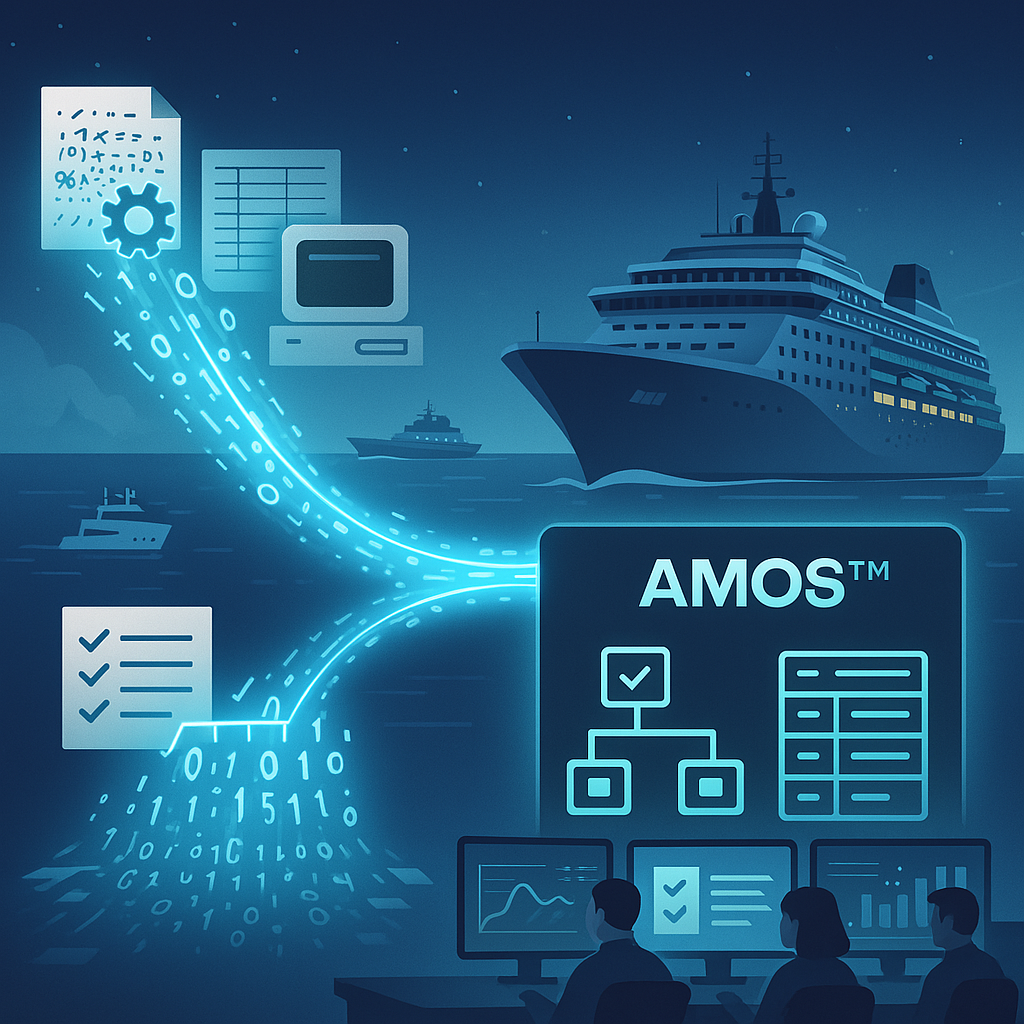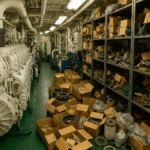When you’re running vessels across oceans, your maintenance system is your safety net, and it’s only as strong as the data behind it.
Whether you’re switching from spreadsheets, outdated software, or siloed systems, migrating your maintenance data isn’t just a technical task, it’s a strategic move. If you get it right, your crew works smarter, your compliance risks drop, and your whole fleet stays on course. Get it wrong, and you’re chasing missing job histories and broken schedules for months.
That’s why maintenance data migration for ships and vessels is one of the most important (but often overlooked) steps when moving to a new system like AMOS™ and it’s where SpecTec brings deep maritime expertise.
Why Data Migration Matters
Maintenance data holds the history, performance, and reliability of every asset onboard. It’s not just about records, it’s about operational continuity.
Without a proper migration plan, you risk:
- Gaps in critical maintenance history
- Misaligned schedules and job planning
- Non-compliance with audit and safety standards
- Confusion across vessel and shore-based teams
This is why we’ve made maintenance the core focus of our AMOS™ implementation strategy at SpecTec, because it’s where your system needs to be the most reliable.
Top Challenges when Migrating Data
Migrating shipboard maintenance data isn’t a simple export or import task. Common issues include:
- Inconsistent equipment naming conventions across vessels
- Duplicate, outdated, or unused task records
- Legacy formats that don’t match AMOS™ data models
- Difficulty aligning planned jobs and part records

That’s why it’s critical to not just move data but optimise it.
How to Achieve a Successful Maintenance Data Migration
Identify What to Migrate
Start by asking: What data actually adds value? Focus on:
- Equipment hierarchies
- Preventive maintenance schedules
- Work order histories
- Spare part usage
- Defect and repair logs
Not every data point is useful. Use our free Maintenance Effectiveness Checklist to prioritise what’s worth migrating and what can be left behind.
Clean and Standardise Your Data
Before migration, clean up:
- Inconsistent asset IDs
- Outdated task codes
- Blank or duplicate fields
- Unit formatting errors (e.g., mm vs cm)

Data that’s clean before it goes in is easier to manage later and avoids functionality issues.
Map Data to the AMOS™ Model
AMOS™ has a powerful but specific structure. SpecTec’s team ensures every record is mapped to the correct place, from job templates to spare part lists.
We handle migrations from:
- Oracle, MSSQL, Access, Sybase
- Excel and flat files
- Other legacy CMMS platforms
Learn more about SpecTec’s Data Migration Services
Structure Maintenance Data with SFI Classification
One of the most overlooked aspects of a successful maintenance data migration is how well the data is classified. Without a consistent structure, even clean data can cause confusion in the new system.
That’s where the SFI coding system comes in. SFI provides a recognised and standardised way to categorise equipment and ship functions, enabling better data organisation, smoother transfers, and faster post-migration usability.
By integrating SpecTec’s SFI-based classification during a migration to AMOS™, you gain:
- Improved cross-fleet consistency
- Easier component identification and maintenance tracking
- Reduced time spent resolving data mismatches
- Enhanced compliance with technical and regulatory standards
If your current system lacks structured SFI mapping, incorporating it during migration is a smart step that prevents future inefficiencies. It sets the foundation for more accurate scheduling, inventory control, and reporting in the AMOS ™ maintenance module.
Explore how you can integrate SFI
Test in a Controlled Environment
We always recommend a phased migration, starting with a test vessel and simulating real workflows:
- Do jobs trigger correctly?
- Are spare parts linked to the right equipment?
- Is maintenance history searchable and audit-ready?
- Are access controls and permissions working
Train, Monitor, Support
Once live, it’s about consistency. Provide AMOS™ training to onboard staff, monitor the system’s performance, and document any changes made.
SpecTec’s global support teams ensure your system evolves with your operation without risking data integrity.
Post-Migration: What Comes Next
Migrating data is the beginning of better maintenance, not the end.
After migration:
- Monitor KPIs like job completion rates and system uptime
- Review roles and permissions regularly
- Ensure data discipline across vessels
- Schedule future audits of data quality
Plan Your Next Move
Getting your maintenance data right means better decisions, fewer errors, and full value from your AMOS™ system. Whether you’re moving from paper, Excel, or another platform, SpecTec ensures your vessel maintenance data migrates smoothly and intelligently.
Explore our Database Migration Services
Learn more about AMOS™ Maintenance
Download the Maintenance Effectiveness Checklist




